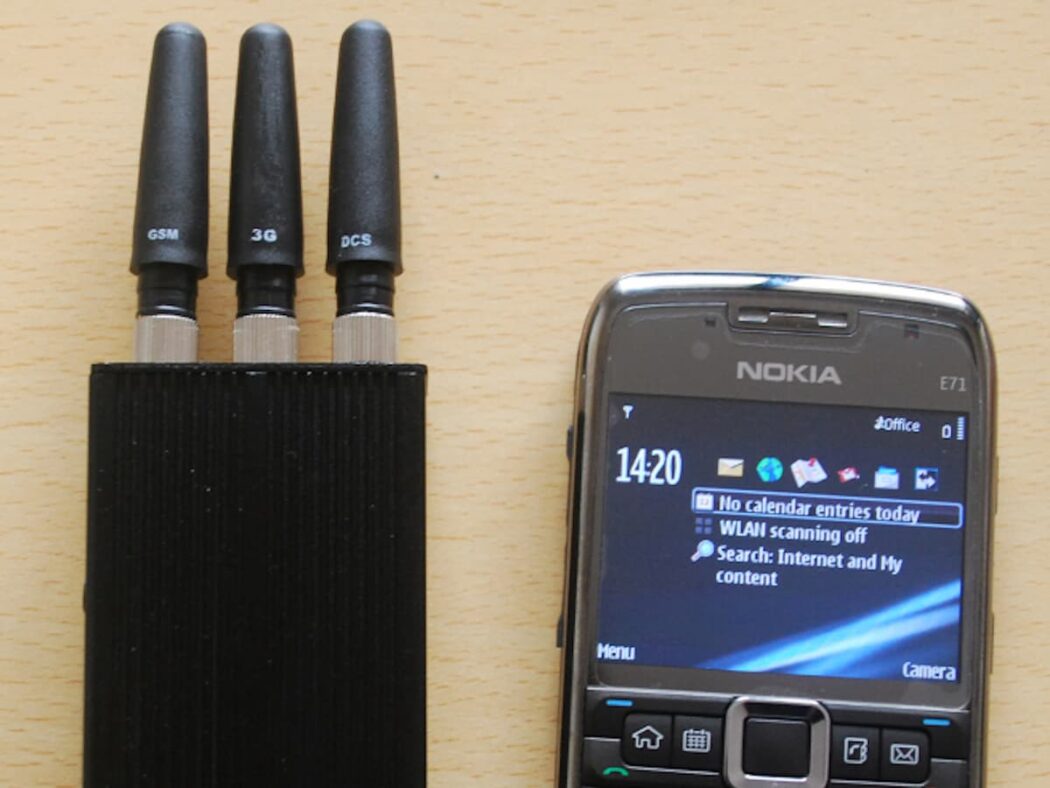In today’s interconnected world, cell phones have become an indispensable part of our lives, revolutionizing how we communicate and access information. However, this widespread use of cell phones has also given rise to concerns over their misuse in specific environments, leading to the development and deployment of cell phone jammers. These devices are designed to disrupt cell phone signals, effectively rendering mobile phones inoperable within their range.
Ultimately, by comprehending the inner workings of a cell phone jammer and recognizing its limitations, we can approach this technology with a cautious and responsible mindset. This knowledge will empower us to balance maintaining controlled communication environments and upholding the essential principles of public safety, privacy, and ethical communication practices.
Technology Overview
Cell phone jammers are electronic devices designed to disrupt cellular communication by emitting radiofrequency signals on the same frequencies mobile phones use. These signals interfere with the normal functioning of cell phones, rendering them unable to make or receive calls, send texts, or access mobile data services. The technology behind cell phone jammers involves three key aspects: cellular communication basics, jamming principles, and the types of cell phone jammers used.
Cellular networks rely on base stations and mobile devices to enable communication. When a cell phone is turned on, and within range of a base station, it establishes a connection by sending signals on specific frequency bands allocated to the cellular network. These signals carry voice and data information between the cell phone and the base station.
Cell phone jammers disrupt communication by transmitting signals that overpower legitimate calls between cell phones and base stations. This interference prevents mobile devices from establishing a stable connection with the network. The most common jamming method is frequency blocking, where the jammer targets and overwhelms specific frequency bands used by cell phones. This effectively creates noise on those frequencies, making it challenging for cell phones to receive or transmit signals.
Types of Cell Phone Jammers
Cell phone jammers come in various types based on technology and scope of disruption:
- Portable Jammers: These handheld devices are battery-operated and have a limited range, typically up to a few meters. They are commonly used in classrooms, theaters, and other small, enclosed areas.
- Vehicle-Mounted Jammers: Installed in vehicles, they have a higher power output and a more extensive range, making them suitable for law enforcement operations and military convoys.
- Stationary Jammers: Fixed installations with even higher power output and a larger coverage area, often used in sensitive locations like prisons, government buildings, or military bases.
- Adjustable Jammers: Some jammers allow users to adjust their target frequency range, allowing for more precise control over the disruption.
- Broad Spectrum Jammers: These devices can jam multiple frequency bands simultaneously, affecting a broader range of communication services.
It is important to note that while cell phone jammers can effectively disrupt communication, their usage raises significant legal and ethical concerns. In many countries, cell phone jammers are strictly regulated, and unauthorized use can lead to severe penalties. Additionally, the indiscriminate use of jammers may interfere with essential services such as emergency calls, posing risks to public safety.
Understanding the technology behind cell phone jammers is essential for striking a balance between maintaining controlled communication environments in specific scenarios and upholding the principles of responsible and ethical communication practices. As technology evolves, efforts to address disruptions caused by cell phone jammers and explore alternative solutions will become increasingly important.
Operating Principles

Cell phone jammers operate on the principles of intentional signal interference, aiming to disrupt cellular communication and prevent mobile devices from connecting to their respective networks. The operation of these devices involves specific techniques and mechanisms to jam cell phone signals effectively.
Cell phone jammers target specific frequency bands allocated to cellular communication. Each cellular network operates within designated frequency ranges, such as GSM (2G), UMTS (3G), LTE (4G), and 5G bands. The jammer emits radiofrequency signals on these frequencies, overwhelming and blocking the legitimate signals used by mobile phones to communicate with base stations.
When a cell phone tries to connect to a cellular network, it searches for available signal channels and communicates with the nearest base station. A cell phone jammer generates interference on these channels by transmitting noise or powerful signals, disrupting everyday communication. As a result, mobile devices cannot establish a stable connection, leading to dropped calls or loss of signal.
Portable jammers typically have a limited range of a few meters, suitable for small enclosed spaces. Vehicle-mounted and stationary jammers, on the other hand, have higher power output and more extensive coverage areas, capable of disrupting communication within several hundred meters to a few kilometers.
Legality and Regulations
The use of cell phone jammers is a complex legal and regulatory issue that varies significantly across different countries and jurisdictions. While some nations strictly prohibit cell phone jammers, others may have specific circumstances where their use is authorized. Understanding the legal status and regulations surrounding cell phone jammers is essential to avoid potential legal consequences and ensure responsible usage.
Limitations of Cell Phone Jammers
While cell phone jammers can effectively disrupt cellular communication within their operating range, they also have significant limitations and drawbacks that must be considered. These limitations stem from technical factors and broader implications of public safety, ethics, and legal considerations.
In maintaining controlled communication environments, it is imperative to prioritize public safety, privacy, and ethical considerations. By understanding the technology behind cell phone jammers and acknowledging their limitations, we can navigate the delicate balance between security and communication, ensuring that the benefits of technological advancements are utilized responsibly to benefit society.

